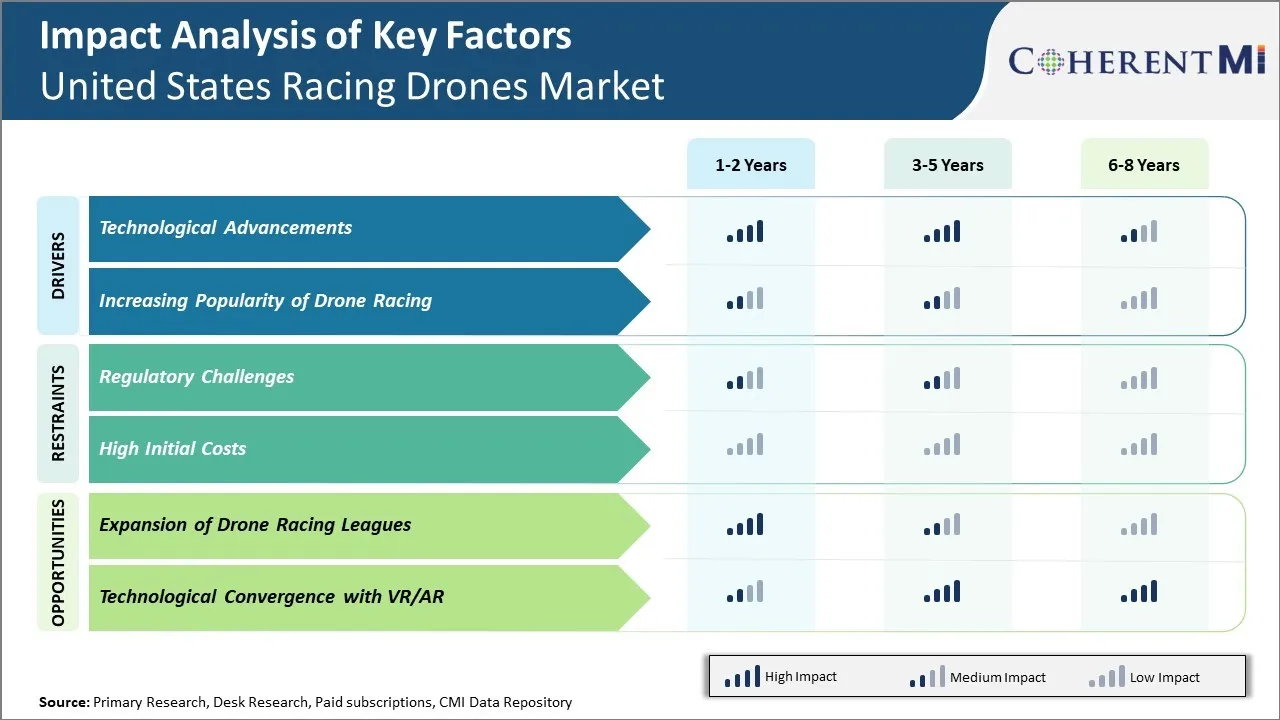United States Racing Drones Market Trends
Market Driver – Technological Advancements
Technological advancements are significantly driving the growth of United States Racing Drones Market. With rapid developments in aerial photography, artificial intelligence and data processing capabilities, racing drones are becoming more autonomous, intelligent and programmable. Manufacturers are equipping drones with advanced cameras, sensors, algorithms and computer vision technologies which enable drones to sense obstacles, track objects and navigate autonomously with minimal human intervention. This has opened new possibilities for commercial, agricultural, defense and leisure applications of racing drones.
Racing drones are being made lighter, more durable and capable of achieving greater speeds due to continuous innovation in materials, propulsion systems and aerodynamic designs. Carbon fiber and polymers are increasingly replacing metals to build lightweight yet robust drone structures. Brushless electric motors provide powerful thrust while minimizing weight. Multi-rotor configurations and collapsible designs make drones compact for portability. Advanced flight controllers, powered by the latest microprocessors, smoothly coordinate the flight of multiple rotors for precise maneuvers. Robust and customizable batteries with higher energy density are delivering longer flight times to pilots.
Market Driver – Increasing Popularity of Drone Racing
The popularity of drone racing has been steadily increasing in the United States over the past few years. Drone racing involves piloting small racing drones through obstacle courses at high speeds through first-person view goggles. It has grown to become a legitimate sport, with competitions and leagues forming across the country. This rising interest in drone racing as a recreational activity has led to strong growth in the market for racing drones in the US.
As more people get involved in drone racing as pilots, spectators and enthusiasts, the demand for specialized racing drones has increased considerably. Racing drones need to be extremely lightweight, agile and fast in order to maneuver nimbly through complex racing tracks. They often have carbon fiber frames, powerful brushless motors and custom-built controllers that give pilots accurate control. With the proliferation of drone racing clubs and competitions, manufacturers are investing heavily in developing new models every season with upgraded features to aid in racing. Major brands like DJI and Holy Stone have expanded their portfolio of racing drones tailored for indoor and outdoor courses at different skill levels.

Market Challenge – Regulatory Challenges
Regulatory challenges are significantly restraining the growth of United States Racing Drones Market. Similar to other innovative technologies, racing drones also face strict regulations around their usage due to concerns around safety and national security. Various federal and state governing bodies have imposed limitations on flying drones in restricted areas and above certain height. The Federal Aviation Administration (FAA) requires all commercial and hobbyist drones to be registered and has established 'no-fly zones' around airports and other sensitive locations. Moreover, drones are banned from flying over 400 feet, flying over people, and flying at night without waivers.
Complying with regulations involves additional costs and paperwork for drone manufacturers, retailers as well as end-users. The compliance burden discourages exploration of drone technology for commercial activities and deters recreational flyers. Many potential applications of racing drones such as delivery services, infrastructure inspection, and aerial photography are not realized due to regulatory barriers. Even grassroots drone racing events struggle to obtain necessary waivers for flying activities. The lack of a clear nationwide regulatory framework creates confusion among stakeholders and slows down technology advancement.
Market Opportunity – Expansion of Drone Racing Leagues
The expansion of drone racing leagues in the United States presents a great opportunity for growth in the domestic racing drone market. Over the past few years, drone racing has emerged as a new and thrilling spectator sport. Popularized firstly by YouTube videos and live streaming broadcasts, drone racing leagues have officially organized competitions with standardized rules and equipment requirements across North America. This professionalization of the sport has created demand for specialized high-performance racing drones that can withstand high-speed maneuvers and crashes.
As drone racing leagues continue promoting the sport and drawing new audiences, particularly younger demographics, the market for racing drones catered towards hobbyists and amateur pilots will likely expand substantially. Major tech and drone manufacturers are poised to capitalize on this opportunity by developing more durable yet affordable drone models optimized for racing. Customization options allowing pilots to express their skills and styles will further encourage spending within the market. Drone racing is also uniquely positioned to capture the imagination of young people interested in STEM and inspire more to consider careers in fields like engineering, coding and electronics.